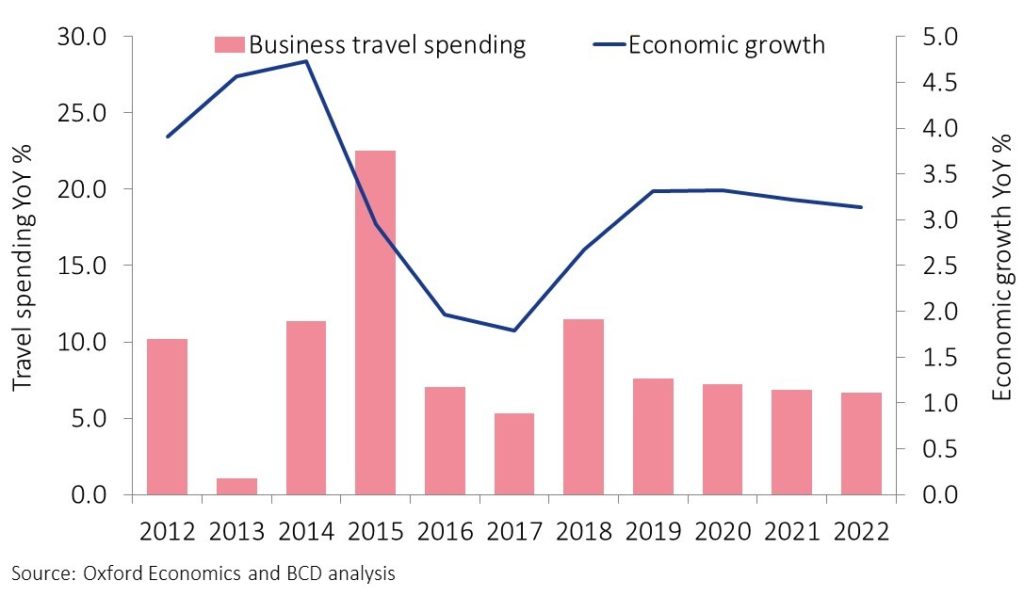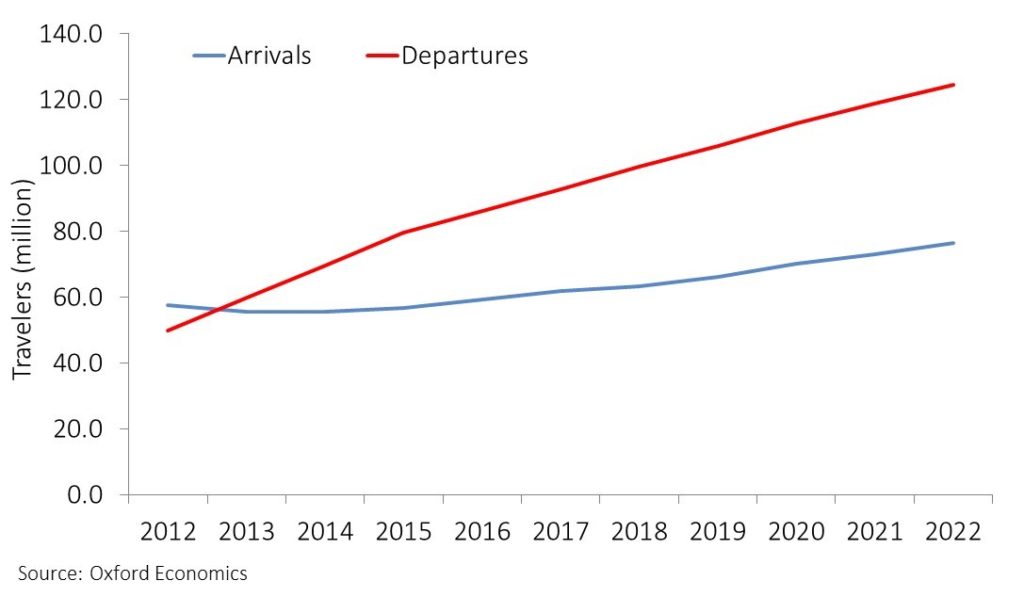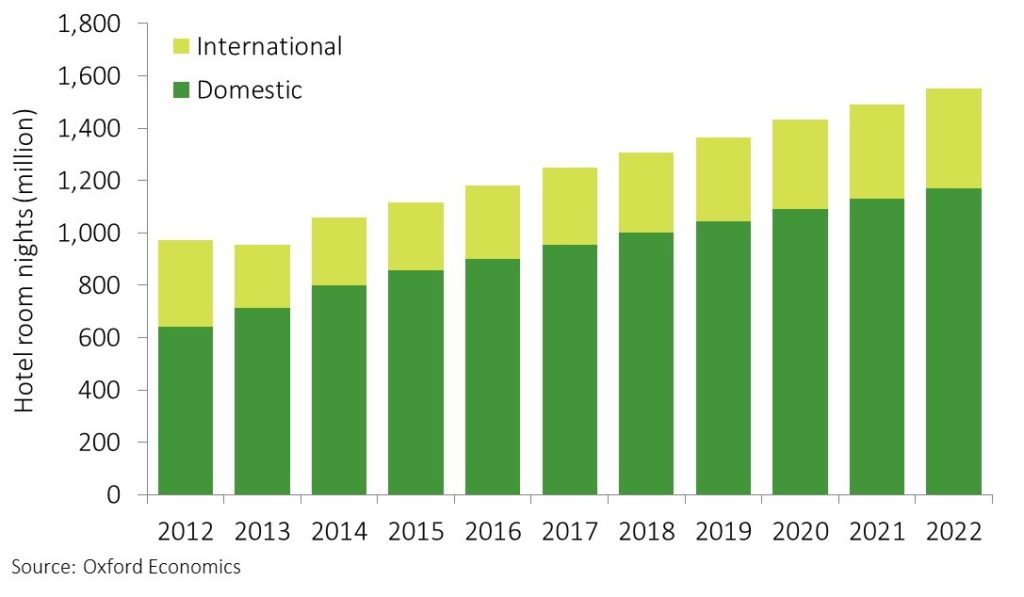
Hotel demand is expected to grow 4.4% a year through 2020.
Companies spend nearly US$327 billion (2.2 trillion Chinese yuan) a year on travel to, from and within China, according to the last-available annual data from 2017. Domestic travel is the largest segment, making up 55% of all business travel spending; 38% of spending comes from outbound international trips. Chinese travelers dominate the market, accounting for 93% share of corporate travel spending. Between 2012 and 2017, business travel spending grew 12.4% per year, on average. Over that time, annual spending increased 11% on domestic trips; 17% on outbound travel and 4% on inbound travel. Business travel spending is expected to slow to average growth of 10.5% a year through 2022. When business and leisure travel numbers are combined, international overnight trips to and from China (including Hong Kong and Macau) averaged growth of 7.5% annually between 2012 and 2017—totaling more than 154 million journeys a year.
Download the 2019 Industry Forecast, with region-specific reports and infographics available in six languages. Ask how BCD Travel can help you get travelers to emerging and established markets all over the world.
Economic environment
Economic growth and business travel spending
Click on image to enlarge
- China’s economy has been the world’s second-largest since 2009. For more than four decades, the government has moved from a centrally planned to a market-based economy rooted in investment and trade. But the government still has significant economic influence.
- When 2018 data comes in, the Chinese economy should show 2018 growth of 6.5%, according to Oxford Economics. Credit growth, real estate activity and consumer spending (encouraged by the government) weakened in 2018, but exports and government-backed infrastructure spending provided some upside.
- China’s trade conflict with the U.S. represents a major immediate headwind. In January 2019, China’s central bank freed more cash for lending in an attempt to stimulate the economy.
- Economists foresee continued deceleration through 2022 to 5.2% growth. They predict investment and industrial activity will decline, while consumption remains steady, and the service sector grows.
Air
International travel
Click on image to enlarge
- Around 45 Chinese airlines operate scheduled flights. Most are majority-owned by one of four large airline groups: Air China, China Eastern, China Southern and HNA Group.
- China Eastern and China Southern lead the market; each holds a 22% passenger share.
- China’s largest airlines require companies to provide “white lists” of passengers authorized to use discounted corporate fares. The lists apply to both domestic and international flights originating in China, except those leaving from Macau and Hong Kong.
- Air travel demand is weakening. The slowdown in the Chinese economy may be one factor; China’s gradual liberalization of domestic airfares may be another. (At the start of 2018, the Chinese authorities extended flexible pricing to more than a third of domestic routes, which together account for half of domestic air travel. This has led to higher fares on some routes.)
Accomodation
Hotel demand
Click on image to enlarge
- Demand for hotel accommodation in China increased by 29% between 2012 and 2017, rising to 1.25 billion room nights. Domestic travelers dominate the market, consistently accounting for around three-quarters of hotels’ business.
- Between 2013 and 2017, the number of chain hotels operating in China increased by 56%, according to industry research firm STR. Global chains are turning their attention to secondary and tertiary cities, as evidenced by openings like Radisson Blu Zhengzhou, Niccolo Changsha and Radisson Ningbo Beilun Hotel.
- Chinese chains are often the first choice for domestic travelers, and many have a global presence. Jin Jiang International, BTG Homeinns Hotels and Huazhu Hotel Group are among the world’s top 10 hotel chains.
- Through 2020, hotel demand is expected to grow 4.4% a year, with domestic and international business expanding at a similar pace. Average daily rates (ADRs) could increase up to 2% in 2019, according to BCD Travel’s 2019 Industry Forecast.




